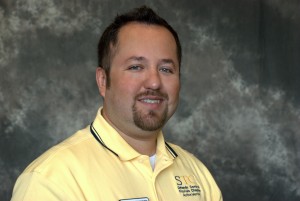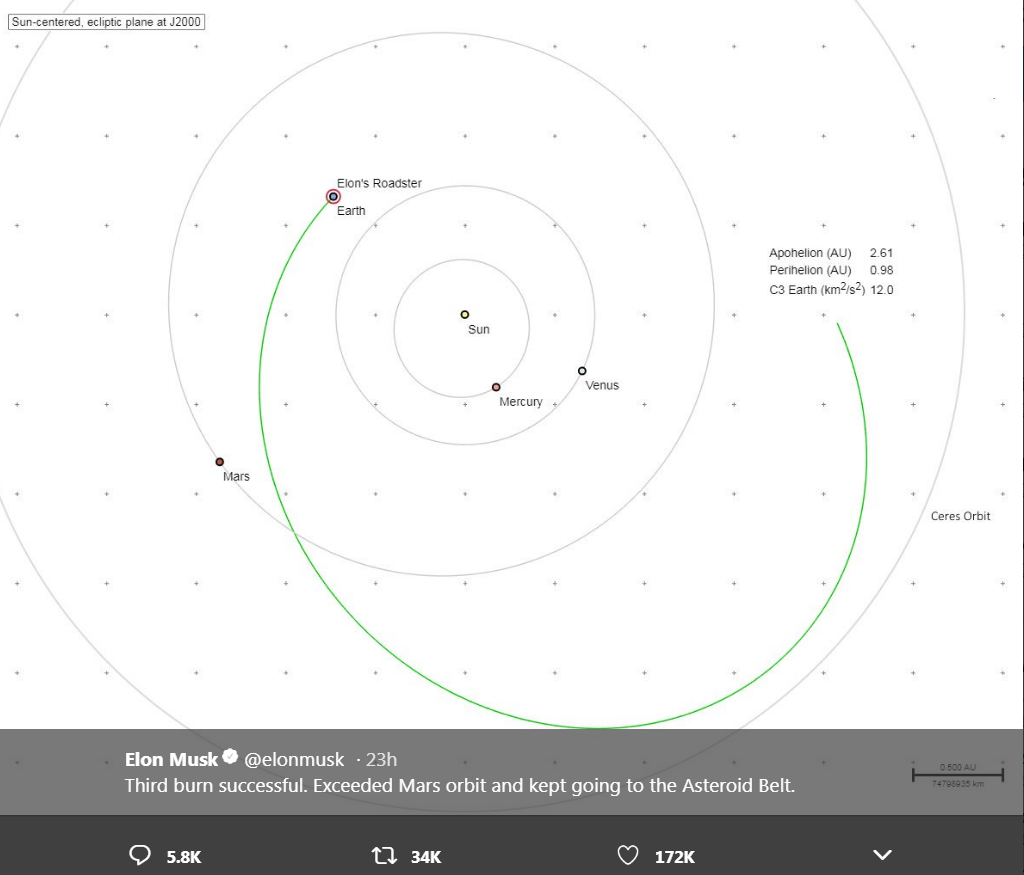
By: Alex Garcia
President
(Orlando Central) Florida Chapter, STC
president@stc-orlando.org
Article written 6 February 2018
“There’s a starman waiting in the sky
He’d like to come and meet us
But he thinks he’d blow our minds
There’s a starman waiting in the sky
He’s told us not to blow it
Cause he knows it’s all worthwhile”“Starman” by David Bowie
Dear members and friends, you’ll have to indulge my geekiness this month in President’s Corner. Today, my husband and I ventured out to Titusville, FL to witness the test launch of a new super-rocket: the SpaceX Falcon Heavy. This spacecraft, a three stage rocket with three boosters, had as much thrust as the Saturn V rocket that took us to the moon in the 1970s. Meaning, it was the largest rocket launched in my lifetime. As a degreed rocket scientist, this launch was monumental for me.
The payload? A 2008 candy apple red Tesla Roadster convertible, because WHY NOT? The passenger? A mannequin named Starman. The course? A perpetual, heliocentric, elliptical Hohmann transfer orbit. From our friends at Bill Nye the Science Guy’s The Planetary Society, here is a little more about Starman’s projected trajectory:
A Hohmann transfer orbit can take a spacecraft from Earth to Mars. The orbit is an elliptical one, where the periapsis (nearest point) is at Earth’s distance from the Sun and the apoapsis (farthest point) is at Mars’ distance from the Sun. The transfer orbit has to be timed so that when the spacecraft departs Earth, it will arrive at its orbit apoapsis when Mars is at the same position in its orbit. Earth and Mars align properly for a Hohmann transfer once every 26 months.

the world’s most powerful rocket, from historic Launch Pad 39A at Kennedy Space Center on February 6, 2018.
We need to understand all of the achievements that took place within the first six hours of today’s mission:
- Two previously-flown Falcon 9 first-stage boosters lifted a center core, and then landed, simultaneously at Cape Canaveral Air Force Station.
- An unproven two-stage center core carried a fairing and payload to Earth escape velocity. It attempted a water landing, but did not survive.
- An unproven fairing third stage deployed a payload, sending it off into the Hohmann Transfer Orbit.
- The payload survived the radiation of Earth’s Van Allen belt.
This flight was a proving ground for the technologies that will take humans back to space, past low-Earth orbit. I honestly cannot wait for the achievements to continue.
So, my fellow technical communicators, embrace your geekiness, and embrace the TECHNICAL part of our profession. Become the subject matter experts in whatever you are documenting. If it’s hardware: tear it apart and rebuild it. If it’s software: try to break it.
UPDATE 10:00 PM 2/6/18: The rocket’s second stage burned too long, meaning Starman and the Tesla overshot the Hohmann Transfer Orbit. They have entered a heliocentric orbit that will take them past Mars and into the Asteroid Belt. Such is life in orbital dynamics. Elon Musk’s Twitter update read:

Here is Elon Musk’s last picture of Starman before his car’s 24 hour batteries expired. Godspeed, Starman!


